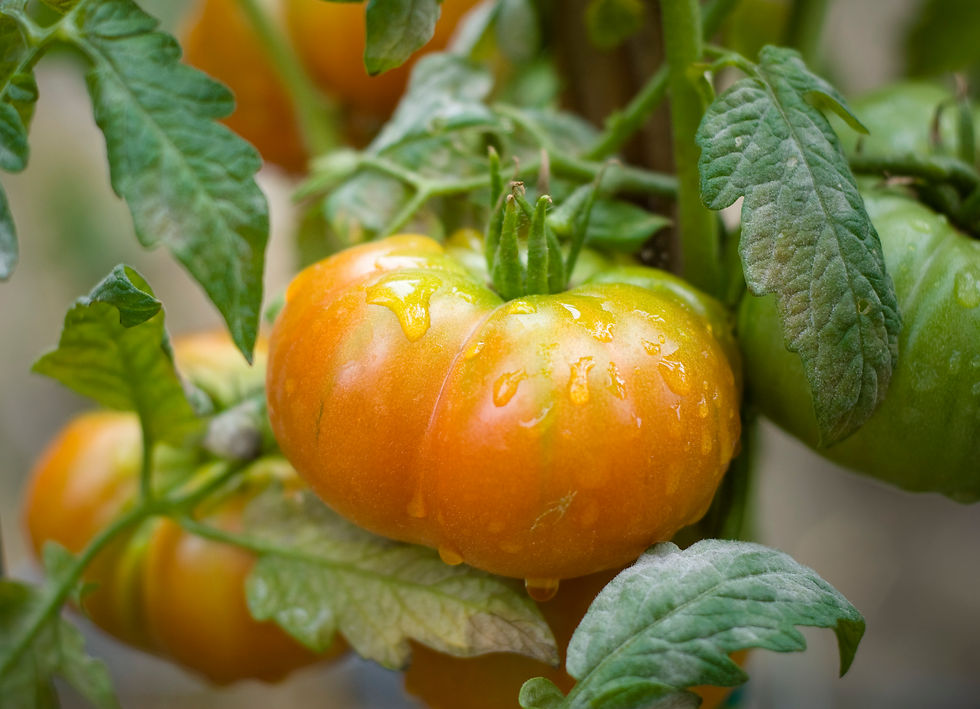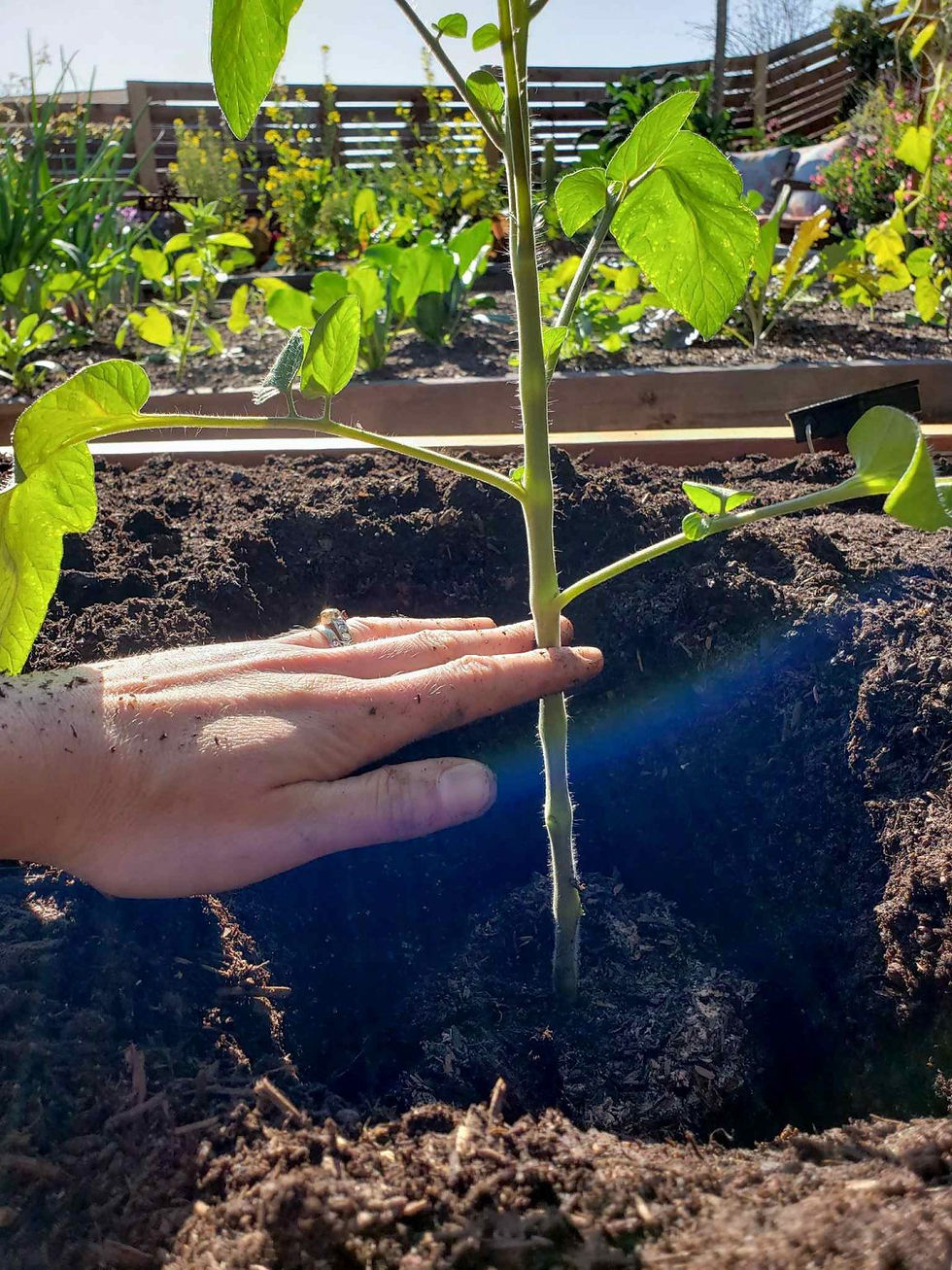The Cultivation, Issue 10
- Kat Cervoni

- Jul 8, 2020
- 5 min read
Updated: Oct 21, 2020
July 8, 2020
The Cultivation by Staghorn Living is a weekly newsletter offering expert insight for garden-filled living. Here you'll find ideas and hands-on guidance for everything from planting tricks and patio decor to the tools and tips we treasure.

Editor's Note
Color, color, and more color is what I love about a July garden. This is truly the time for “wow” moments as the early-summer perennials overlap with the mid-summer bloomers, the annuals catch their stride, and anything that came back from last year — or was planted in spring — has gotten BIG. While I often stick to cooler flower hues, it’s the deep magentas, vermillions, and electric purples that stop me in my tracks and inspire my inner plant paparazzi. This week, we’re offering inspiration in the form of a backyard garden renovation with plantings that offer bright pops of color against a background of easy-going neutrals. It’s also the time of year when the ultimate party pooper — the mosquito — makes itself feel especially known, so we’re giving a rundown of the biggest culprits and the best solutions to help reclaim your space from this pesky biter.
Happy planting!

Project Profile: Carroll Gardens Backyard

Confronted with a yard of red-painted concrete that was surrounded by a chain link fence, our clients had two main priorities for their new outdoor space: beauty and function. With floor-to-ceiling doors and windows looking out on the yard, it was essential for the garden to feel like a natural and thoughtful extension of the newly-renovated interior. We opted for large, thermal bluestone pavers in a running-bond pattern for a smooth and contemporary ground plane, and horizontal clear cedar for the fencing and built-ins. The clients had already selected a generous teak table and overhead pendant light, so we used those elements to center a built-in storage bench and raised planter beds. Overhead cafe string lights, along with the pendant lamp, enable the family to enjoy their garden after dark. Low-maintenance flowering perennials and grasses ensure they get a succession of bloom times for garden color or cutting. We added a variety of herbs and vegetables in the planter so they always have something tasty to pluck.


3 Tips for Better Summer Tomatoes

What’s better than the taste of a fresh summer tomato? The taste of a fresh summer tomato you cultivated yourself! While they’re known for being somewhere between finicky and unforgiving, tomatoes don’t have to be such high maintenance. Follow these three simple tips to ensure your crop comes out looking and tasting picnic perfect.
1- Feed and water regularly (they’re greedy plants and need a lot of both).
Tomato plants thrive on consistency. Without regular food and water, the fruit develops soggy bottoms and split sides. Creating and sticking to a schedule for both watering and feeding (we recommend a seaweed feed) will ensure their needs are met. Here’s our recommended schedule:
In a planter: Water every other day, and deeply — you'll know you've done the job when you see water come through the drainage holes in the bottom. Feed every 2 weeks.
In the ground: Water one to three times per week, deeply, depending on your climate. Feed every 2 weeks.

2- Plant deeply.
There are varying rules of thumb on just how deep to bury your young (1’ tall or so) tomato plant. We err on the conservative side and recommend planting it up to the first set of leaves. This will promote more root growth in the main stem, which will help get more nutrients up to the plant. It also helps the plant become stronger and more stable, which is key for supporting those giant beefsteaks you’ll be enjoying in a few months. Don’t forget to mulch — a 1'' thick layer around the plant (not mounded on the stem area) will protect the roots and keep weeds at bay.

3- Pick a sunny spot.
You want to plant tomatoes in full sun, if at all possible.
If the only spot you've got is part sun (4 hours or less of direct sunlight), you're going to need to adjust your expectations. You'll still get some nice fruit, but not as much as if you plant in full sun.
Full sun and good air flow is a recipe for success with tomatoes.
Plant Lore: Witch Hazel

Witch hazel: The name alone evokes everything from a spooky, magical potion to your facial astringent. But it’s for completely different reasons that this small, deciduous tree was given this common name. Native to the woodlands of eastern North America, Hamamelis virginiana is somewhat understated in appearance with an open, shrubby, and outward-growing habit and sometimes subtle, spider-like yellow flowers that appear directly off the branch in late autumn.

Early settlers found — and some sources say that Native Americans showed them — that the branches of the witch hazel were especially well-suited to finding water. By slowing fanning a Y-shaped branch over the ground, the branch-holder could tell if there was water underneath when he or she felt the branch pull. The practice, known as dowsing, is still alive and well today, albeit more typically carried out with metal dowsing or divining rods. Because of the witch hazel's use in dowsing, it began to be called wice — an Old English general descriptor for pliable branches — or wican, meaning “to bend.” The hazel portion of the name derives from the Old English hæsel which was a general name given to any shrub in the pine family.
The Buzz: What really keeps mosquitoes away?
One of the most common queries we get each season is how to get rid of mosquitoes. Unfortunately, if you live in the U.S. you really can’t. What you can do is mitigate, and the right method depends on your outdoor conditions. But first, it’s crucial to understand why mosquitoes are particularly bad in some areas but not others:
Water/Mositure: Mosquitoes love water (they lay their eggs and go through several development phases there) and humidity in general. Stagnant water from rain puddles and bird baths, dewy lawns, damp woodlands are all a mosquitoes’ ultimate spring break destination. Water/Moisture
Airflow: Ever notice how shady, sheltered places, such as beneath a tree or on a covered porch, seem especially bad for mosquito attacks? Mosquitoes typically weigh around 2.5 milligrams, which makes hanging out in breeze-free spaces a no-go for anyone who doesn’t want to get bit, which is everyone. That’s why your lovely shade garden with the canopy of 100-year-old oak trees is a nightmare while your buddy’s rooftop is A-ok.
The remedies:
Fix drainage issues. No amount of citronella candles will save you if your lawn or patio can’t properly dry out.
Keep the water moving. Installing a small fountain or bubbler fixture to make ripples will dissuade mosquitoes for landing and laying eggs.
Add a fan. This can have a big impact on a space, whether it's a temporary box fan on the ground or permanent overhead or wall-mounted fixture. Keep the air moving!
Get a bug zapper. A well-rated zapper attracts mosquitoes away from you and is helpful in a smaller space, such as a patio. The Flowtron BK-40D Electronic Insect Killer has stellar ratings.
Burn a citronella-incense coil. A citronella coil or candle is another good small-space solution since it’s primarily effective in the area where the fragrance lingers. Using this in conjunction with a bug zapper is an especially effective combo. We love this one from Food52.
We hope you enjoyed Issue 10 of The Cultivation.We want to provide content that captivates, educates, and inspires you, so let us know if there's something you'd like us to include next time. Please send your thoughts by emailing us here. Want to catch up on previous issues? Click here to read through all of our prior editions.
See you next week.




Comments